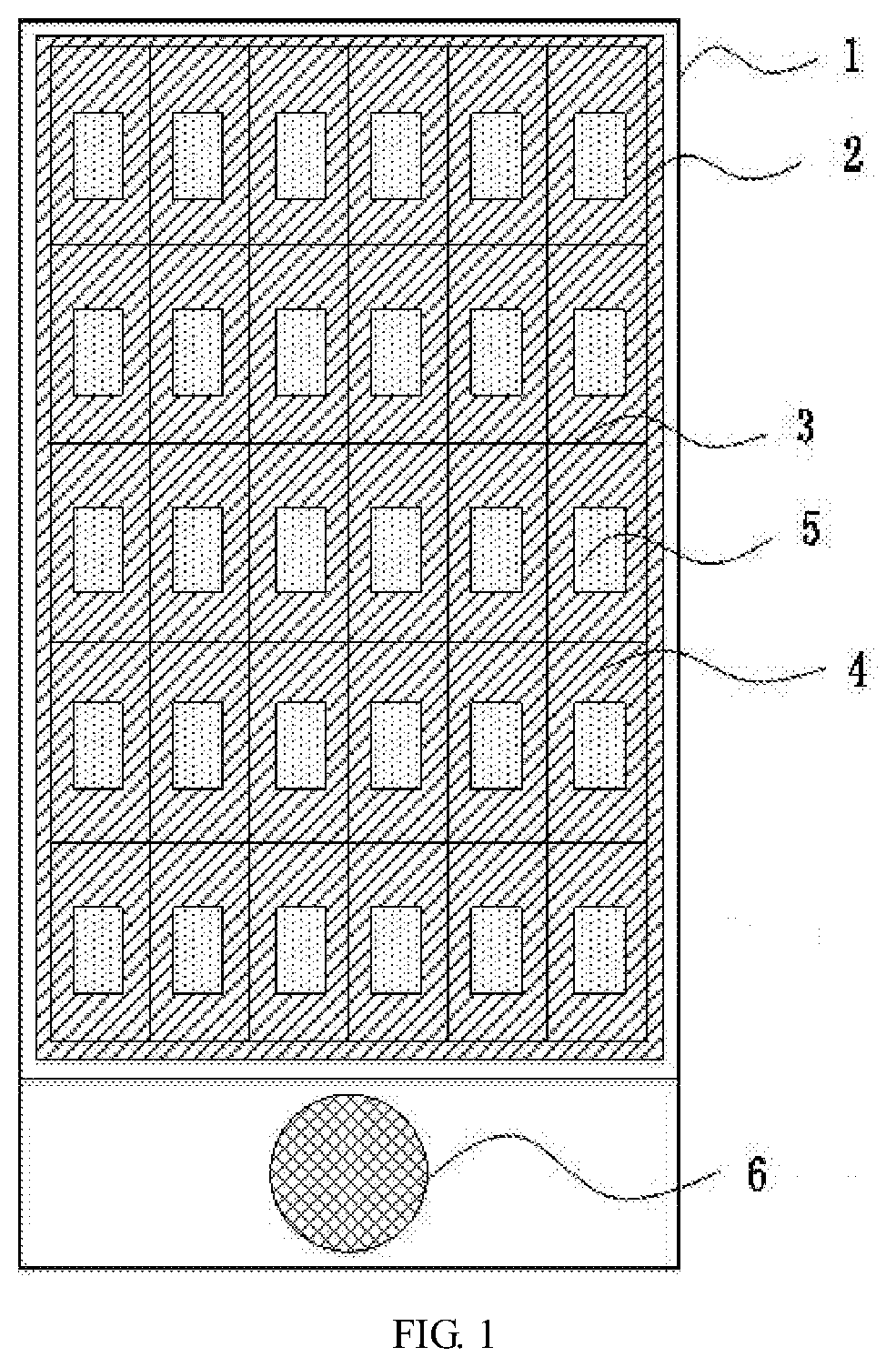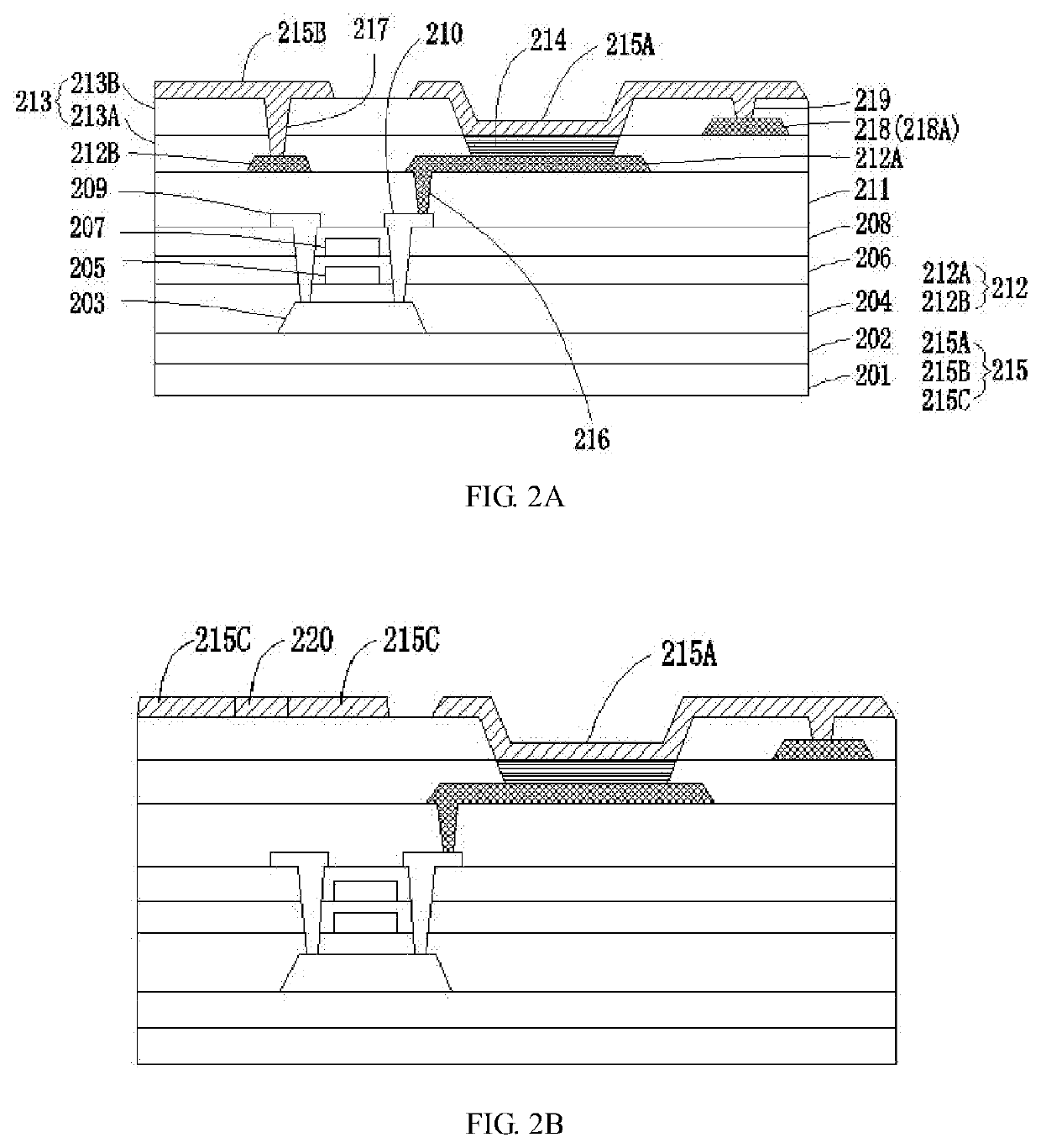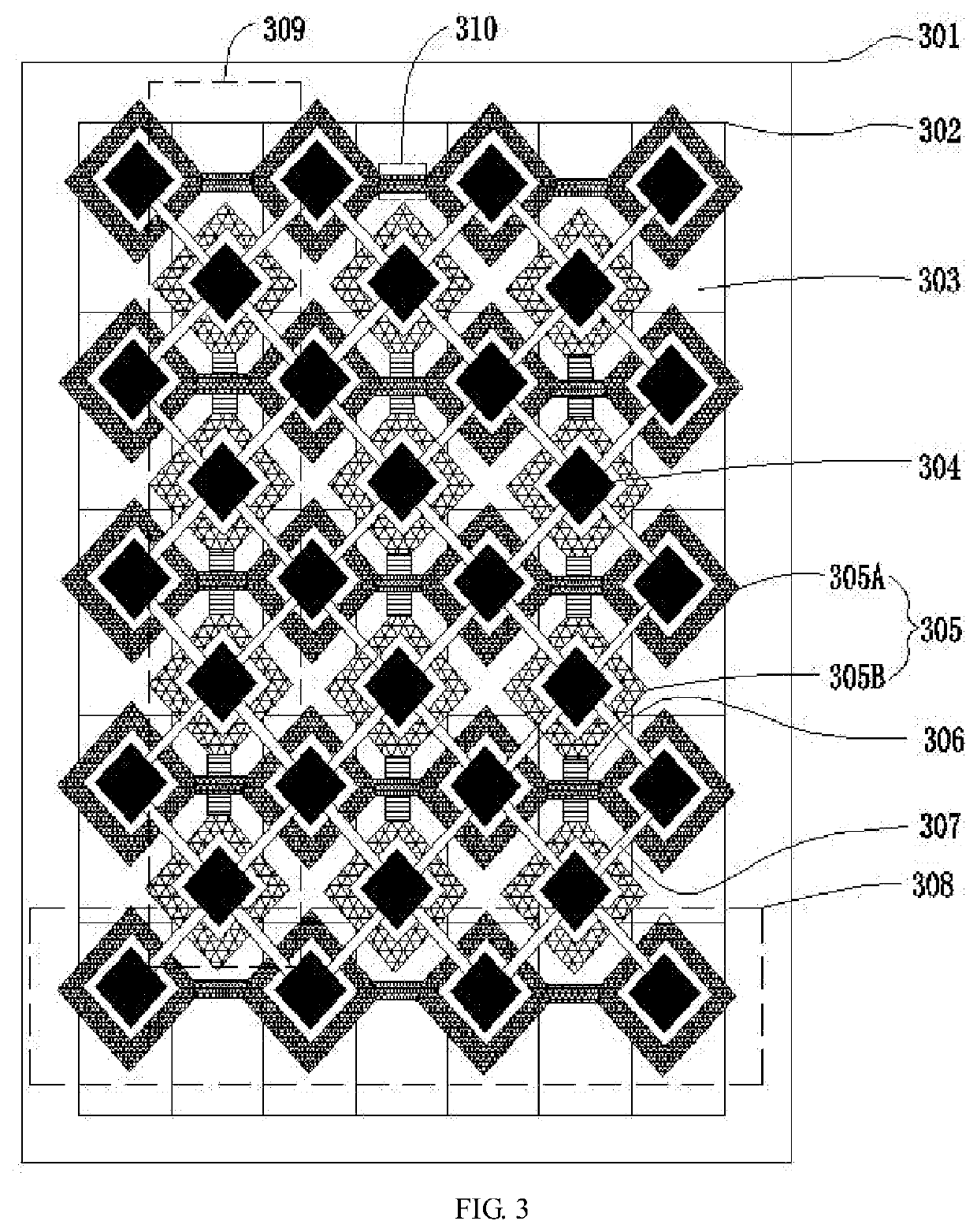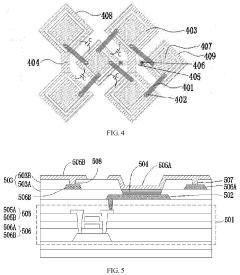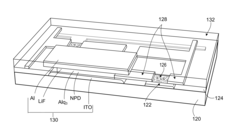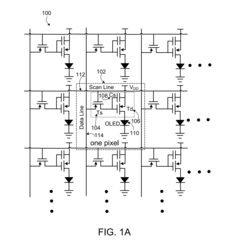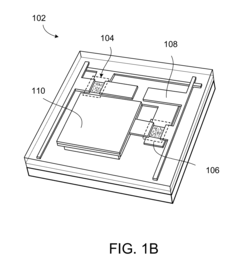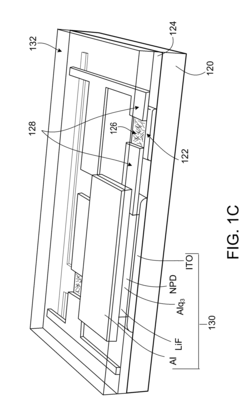The future of transparent AMOLED in automotive displays.
JUL 17, 20259 MIN READ
Generate Your Research Report Instantly with AI Agent
Patsnap Eureka helps you evaluate technical feasibility & market potential.
AMOLED Evolution in Automotive
The evolution of AMOLED technology in automotive displays has been marked by significant advancements and increasing adoption over the past decade. Initially, AMOLED displays were primarily used in high-end luxury vehicles due to their superior image quality and energy efficiency. However, as manufacturing processes improved and costs decreased, AMOLED displays began to penetrate mid-range and even entry-level vehicle segments.
The automotive industry's shift towards electrification and autonomous driving has been a key driver in the adoption of AMOLED displays. These technologies require more sophisticated human-machine interfaces, which AMOLED screens can effectively provide. The high contrast ratios, wide color gamut, and fast response times of AMOLED displays make them ideal for displaying complex information and entertainment content in modern vehicles.
One of the most significant developments in automotive AMOLED technology has been the introduction of flexible and curved displays. These innovations have allowed designers to create more immersive and ergonomic cockpit layouts, integrating displays seamlessly into the vehicle's interior. Curved AMOLED panels have become particularly popular in dashboard designs, offering improved visibility and aesthetics.
Transparent AMOLED technology represents the latest frontier in automotive display evolution. This cutting-edge technology allows for the creation of see-through displays that can be integrated into windshields, side windows, and other glass surfaces in vehicles. The potential applications of transparent AMOLED in automotive settings are vast, ranging from augmented reality head-up displays to interactive passenger windows.
The development of transparent AMOLED for automotive use has faced several challenges, including durability, visibility in varying light conditions, and integration with existing vehicle systems. However, recent advancements in materials science and manufacturing techniques have led to significant improvements in these areas. Major display manufacturers and automotive suppliers have been investing heavily in research and development to overcome these obstacles and bring transparent AMOLED technology to market.
As the automotive industry continues to evolve towards more connected and autonomous vehicles, the role of AMOLED displays, particularly transparent variants, is expected to become increasingly crucial. These displays will not only serve as information and entertainment interfaces but also as key components in advanced driver assistance systems and autonomous driving technologies. The future of transparent AMOLED in automotive displays holds the promise of transforming the driving experience, enhancing safety, and redefining the concept of in-vehicle information display.
The automotive industry's shift towards electrification and autonomous driving has been a key driver in the adoption of AMOLED displays. These technologies require more sophisticated human-machine interfaces, which AMOLED screens can effectively provide. The high contrast ratios, wide color gamut, and fast response times of AMOLED displays make them ideal for displaying complex information and entertainment content in modern vehicles.
One of the most significant developments in automotive AMOLED technology has been the introduction of flexible and curved displays. These innovations have allowed designers to create more immersive and ergonomic cockpit layouts, integrating displays seamlessly into the vehicle's interior. Curved AMOLED panels have become particularly popular in dashboard designs, offering improved visibility and aesthetics.
Transparent AMOLED technology represents the latest frontier in automotive display evolution. This cutting-edge technology allows for the creation of see-through displays that can be integrated into windshields, side windows, and other glass surfaces in vehicles. The potential applications of transparent AMOLED in automotive settings are vast, ranging from augmented reality head-up displays to interactive passenger windows.
The development of transparent AMOLED for automotive use has faced several challenges, including durability, visibility in varying light conditions, and integration with existing vehicle systems. However, recent advancements in materials science and manufacturing techniques have led to significant improvements in these areas. Major display manufacturers and automotive suppliers have been investing heavily in research and development to overcome these obstacles and bring transparent AMOLED technology to market.
As the automotive industry continues to evolve towards more connected and autonomous vehicles, the role of AMOLED displays, particularly transparent variants, is expected to become increasingly crucial. These displays will not only serve as information and entertainment interfaces but also as key components in advanced driver assistance systems and autonomous driving technologies. The future of transparent AMOLED in automotive displays holds the promise of transforming the driving experience, enhancing safety, and redefining the concept of in-vehicle information display.
Market Demand Analysis
The automotive industry is witnessing a significant shift towards advanced display technologies, with transparent AMOLED (Active-Matrix Organic Light-Emitting Diode) displays emerging as a promising solution for future vehicles. Market demand for these innovative displays is driven by several factors, including enhanced safety features, improved user experience, and the growing trend of vehicle connectivity.
Transparent AMOLED displays offer unique advantages in automotive applications, such as heads-up displays (HUDs) and augmented reality (AR) windshields. These displays can provide crucial information to drivers without obstructing their view of the road, thereby improving safety and reducing driver distraction. As a result, there is a growing demand for these displays in premium and luxury vehicle segments, with potential for wider adoption in mid-range vehicles in the coming years.
The market for automotive displays is expected to grow substantially, with transparent AMOLED displays playing a significant role in this expansion. The increasing integration of advanced driver assistance systems (ADAS) and autonomous driving technologies is further fueling the demand for these displays. They can serve as intuitive interfaces for displaying complex information related to vehicle status, navigation, and surrounding environment.
Consumer expectations for in-vehicle infotainment systems are also driving the demand for transparent AMOLED displays. As vehicles become more connected and feature-rich, there is a growing need for displays that can seamlessly integrate with the vehicle's interior design while providing high-quality visual information. Transparent AMOLED technology offers the potential to transform traditional windshields and windows into interactive surfaces, enhancing the overall driving experience.
The automotive industry's shift towards electric vehicles (EVs) is another factor contributing to the increased demand for transparent AMOLED displays. EVs often feature more advanced digital interfaces, and transparent displays can help maximize the use of interior space while providing essential information to drivers and passengers.
However, the adoption of transparent AMOLED displays in automotive applications faces some challenges. Cost remains a significant factor, as these displays are currently more expensive than traditional LCD or OLED alternatives. Additionally, durability and reliability in harsh automotive environments need to be addressed to ensure widespread adoption.
Despite these challenges, the market potential for transparent AMOLED displays in the automotive sector is substantial. As technology advances and production costs decrease, we can expect to see increased integration of these displays across various vehicle segments. The market is likely to see a gradual shift from premium vehicles to more mainstream models, driven by consumer demand for advanced safety features and enhanced in-vehicle experiences.
Transparent AMOLED displays offer unique advantages in automotive applications, such as heads-up displays (HUDs) and augmented reality (AR) windshields. These displays can provide crucial information to drivers without obstructing their view of the road, thereby improving safety and reducing driver distraction. As a result, there is a growing demand for these displays in premium and luxury vehicle segments, with potential for wider adoption in mid-range vehicles in the coming years.
The market for automotive displays is expected to grow substantially, with transparent AMOLED displays playing a significant role in this expansion. The increasing integration of advanced driver assistance systems (ADAS) and autonomous driving technologies is further fueling the demand for these displays. They can serve as intuitive interfaces for displaying complex information related to vehicle status, navigation, and surrounding environment.
Consumer expectations for in-vehicle infotainment systems are also driving the demand for transparent AMOLED displays. As vehicles become more connected and feature-rich, there is a growing need for displays that can seamlessly integrate with the vehicle's interior design while providing high-quality visual information. Transparent AMOLED technology offers the potential to transform traditional windshields and windows into interactive surfaces, enhancing the overall driving experience.
The automotive industry's shift towards electric vehicles (EVs) is another factor contributing to the increased demand for transparent AMOLED displays. EVs often feature more advanced digital interfaces, and transparent displays can help maximize the use of interior space while providing essential information to drivers and passengers.
However, the adoption of transparent AMOLED displays in automotive applications faces some challenges. Cost remains a significant factor, as these displays are currently more expensive than traditional LCD or OLED alternatives. Additionally, durability and reliability in harsh automotive environments need to be addressed to ensure widespread adoption.
Despite these challenges, the market potential for transparent AMOLED displays in the automotive sector is substantial. As technology advances and production costs decrease, we can expect to see increased integration of these displays across various vehicle segments. The market is likely to see a gradual shift from premium vehicles to more mainstream models, driven by consumer demand for advanced safety features and enhanced in-vehicle experiences.
Transparent AMOLED Challenges
While transparent AMOLED technology holds immense potential for automotive displays, it faces several significant challenges that need to be addressed for widespread adoption. One of the primary obstacles is the limited transparency of current AMOLED panels. Although improvements have been made, achieving high levels of transparency while maintaining display quality remains a technical hurdle.
Durability and reliability pose another major challenge, particularly in the harsh automotive environment. Transparent AMOLED displays must withstand extreme temperatures, vibrations, and prolonged exposure to sunlight without degrading performance or lifespan. Developing robust encapsulation techniques and materials that can protect the sensitive organic components is crucial.
Power efficiency is a critical concern, especially for electric vehicles where energy conservation is paramount. Transparent AMOLED displays typically require more power to achieve the same brightness levels as traditional displays, potentially impacting the vehicle's range and overall energy efficiency.
Manufacturing scalability and cost-effectiveness present significant hurdles. The production processes for transparent AMOLED displays are complex and expensive, making it challenging to achieve economies of scale necessary for widespread automotive adoption. Reducing production costs while maintaining quality is essential for market viability.
Integration challenges arise when incorporating transparent AMOLED displays into existing vehicle designs. Issues such as optimal placement, viewing angles, and compatibility with other automotive systems need to be carefully addressed to ensure seamless integration and enhanced user experience.
Addressing sunlight readability is another crucial challenge. Transparent displays must maintain visibility and contrast under various lighting conditions, including bright sunlight, without compromising transparency or causing driver distraction.
Ensuring consistent color reproduction and image quality across the entire display area, especially in larger automotive displays, remains a technical challenge. Achieving uniform transparency and display performance across curved or irregularly shaped surfaces adds another layer of complexity.
Lastly, the development of appropriate content and user interfaces specifically designed for transparent displays in automotive applications is essential. Creating intuitive and non-distracting interfaces that leverage the unique properties of transparent AMOLED technology requires significant research and innovation in user experience design.
Durability and reliability pose another major challenge, particularly in the harsh automotive environment. Transparent AMOLED displays must withstand extreme temperatures, vibrations, and prolonged exposure to sunlight without degrading performance or lifespan. Developing robust encapsulation techniques and materials that can protect the sensitive organic components is crucial.
Power efficiency is a critical concern, especially for electric vehicles where energy conservation is paramount. Transparent AMOLED displays typically require more power to achieve the same brightness levels as traditional displays, potentially impacting the vehicle's range and overall energy efficiency.
Manufacturing scalability and cost-effectiveness present significant hurdles. The production processes for transparent AMOLED displays are complex and expensive, making it challenging to achieve economies of scale necessary for widespread automotive adoption. Reducing production costs while maintaining quality is essential for market viability.
Integration challenges arise when incorporating transparent AMOLED displays into existing vehicle designs. Issues such as optimal placement, viewing angles, and compatibility with other automotive systems need to be carefully addressed to ensure seamless integration and enhanced user experience.
Addressing sunlight readability is another crucial challenge. Transparent displays must maintain visibility and contrast under various lighting conditions, including bright sunlight, without compromising transparency or causing driver distraction.
Ensuring consistent color reproduction and image quality across the entire display area, especially in larger automotive displays, remains a technical challenge. Achieving uniform transparency and display performance across curved or irregularly shaped surfaces adds another layer of complexity.
Lastly, the development of appropriate content and user interfaces specifically designed for transparent displays in automotive applications is essential. Creating intuitive and non-distracting interfaces that leverage the unique properties of transparent AMOLED technology requires significant research and innovation in user experience design.
Current Display Solutions
01 Transparent AMOLED display structure
Transparent AMOLED displays are designed with a specific structure that allows light to pass through while maintaining display functionality. This structure typically includes transparent electrodes, light-emitting layers, and encapsulation layers. The arrangement and materials of these layers are optimized to achieve a balance between transparency and display performance.- Transparent AMOLED display structure: Transparent AMOLED displays are designed with a specific structure that allows light to pass through while maintaining display functionality. This structure typically includes transparent electrodes, light-emitting layers, and encapsulation materials. The arrangement and composition of these layers are optimized to achieve a balance between transparency and display performance.
- Pixel design for transparency: The design of individual pixels in transparent AMOLED displays is crucial for achieving overall transparency. This includes the use of transparent or semi-transparent materials for pixel components, optimizing pixel size and spacing, and implementing novel pixel architectures that maximize light transmission while maintaining display quality.
- Transparent electrode materials: The choice of transparent electrode materials is critical for AMOLED transparency. Materials such as indium tin oxide (ITO), graphene, or metal nanowires are used to create electrodes that are both conductive and highly transparent. The development and optimization of these materials contribute significantly to the overall transparency of the display.
- Transparency control mechanisms: Some transparent AMOLED displays incorporate mechanisms to control the level of transparency. This can include adjustable opacity layers, switchable transparency modes, or dynamic control of pixel emission. These features allow the display to transition between transparent and opaque states or adjust transparency levels based on user preferences or environmental conditions.
- Integration with other display technologies: Transparent AMOLED technology can be integrated with other display technologies to enhance functionality or achieve specific visual effects. This may include combining transparent AMOLED with traditional LCD backplanes, integrating with augmented reality (AR) systems, or incorporating other transparent electronic components to create multi-functional transparent displays.
02 Pixel design for transparency
The design of individual pixels in transparent AMOLED displays is crucial for achieving overall transparency. This includes the layout of sub-pixels, the use of transparent or semi-transparent materials for transistors and other components, and the optimization of pixel aperture ratio. Advanced pixel designs can significantly improve the transparency of the display while maintaining image quality.Expand Specific Solutions03 Transparent electrode materials
The choice of transparent electrode materials is critical for achieving high transparency in AMOLED displays. Materials such as indium tin oxide (ITO), graphene, or metal nanowires are commonly used. These materials must balance electrical conductivity with optical transparency to ensure proper display function while maximizing light transmission.Expand Specific Solutions04 Transparency enhancement techniques
Various techniques are employed to enhance the transparency of AMOLED displays. These may include the use of anti-reflection coatings, optical matching layers, or micro-lens arrays. Additionally, advanced driving schemes and compensation algorithms can be used to optimize the display's transparency without compromising image quality.Expand Specific Solutions05 Integration with other technologies
Transparent AMOLED displays can be integrated with other technologies to create multifunctional devices. This includes combining transparent displays with touch sensors, solar cells, or other optical components. Such integration can lead to innovative applications in areas like augmented reality, smart windows, or heads-up displays.Expand Specific Solutions
Key Industry Players
The transparent AMOLED automotive display market is in a growth phase, driven by increasing demand for advanced in-vehicle infotainment systems. The market size is expanding rapidly, with projections indicating significant growth over the next few years. Technologically, transparent AMOLED displays are maturing, with companies like BOE Technology, LG Display, and Samsung Electronics leading innovation. These firms are developing thinner, more flexible, and energy-efficient displays. Other players like Tianma Microelectronics and Visionox are also making strides in this field. The competition is intensifying as automotive manufacturers partner with display technology companies to integrate these advanced displays into their vehicles, signaling a shift towards more immersive and interactive automotive interiors.
BOE Technology Group Co., Ltd.
Technical Solution: BOE has developed advanced transparent AMOLED technology for automotive displays, featuring high transparency up to 70% and a wide color gamut covering 100% of DCI-P3 [1]. Their solution integrates touch functionality and supports flexible form factors, enabling seamless integration into vehicle windshields and side windows. BOE's transparent AMOLED displays utilize low-temperature polycrystalline oxide (LTPO) backplane technology, which allows for variable refresh rates from 1Hz to 120Hz, optimizing power efficiency [2]. The company has also implemented advanced pixel compensation algorithms to ensure uniform brightness and color across the entire display area, even in challenging automotive environments with varying temperatures and vibrations [3].
Strengths: Industry-leading transparency, wide color gamut, and flexible form factors. Weaknesses: Potential high costs for mass production and challenges in maintaining consistent performance in extreme automotive conditions.
Continental Automotive Technologies GmbH
Technical Solution: Continental has developed a transparent AMOLED display solution specifically tailored for automotive applications. Their technology focuses on integrating displays into windshields and side windows to create an immersive and informative driving experience. Continental's transparent AMOLED displays offer a transparency of up to 60% when inactive, ensuring clear visibility for drivers [10]. The company has implemented advanced anti-reflection coatings and optical bonding techniques to minimize glare and improve readability in various lighting conditions. Continental's solution also incorporates haptic feedback technology and supports gesture control, enhancing the user interface for drivers and passengers [11].
Strengths: Automotive-specific design, high transparency when inactive, and advanced user interface features. Weaknesses: Limited experience in OLED manufacturing compared to display specialists and potential high costs for initial implementation.
Innovative AMOLED Patents
Active matrix organic light emitting diode (amoled) display panel
PatentInactiveUS20210343972A1
Innovation
- The integration of sensing electrodes into the AMOLED display panel allows for underscreen fingerprint identification, utilizing a patterned cathode layer with insulated first and second electrode rows and conductive bridges to form capacitors for fingerprint recognition, thereby embedding fingerprint identification within the screen and increasing the display area ratio.
Separated Carbon Nanotube-Based Active Matrix Organic Light-Emitting Diode Displays
PatentInactiveUS20140070169A1
Innovation
- The use of separated semiconducting nanotubes as the active channel material in transistors, with a network of nanotubes disposed over a functionalized gate dielectric layer, and integrated into a display control circuit to drive OLED pixels, enabling high on/off ratios and current density.
Automotive Safety Standards
The integration of transparent AMOLED displays in automotive applications necessitates strict adherence to automotive safety standards. These standards are designed to ensure the reliability, durability, and safety of electronic components in vehicles, particularly those that may impact driver visibility and information display.
One of the primary safety standards applicable to transparent AMOLED displays is the ISO 26262 standard for functional safety in road vehicles. This standard outlines the requirements for ensuring that electronic and electrical systems in vehicles operate safely and reliably. For transparent AMOLED displays, this includes considerations such as fail-safe mechanisms, fault tolerance, and system redundancy to prevent critical failures that could compromise driver safety.
Environmental testing standards, such as those outlined in ISO 16750, are crucial for transparent AMOLED displays in automotive applications. These standards specify the environmental conditions that vehicle components must withstand, including temperature extremes, humidity, vibration, and electromagnetic interference. Transparent AMOLED displays must demonstrate resilience to these conditions to ensure consistent performance and longevity in diverse automotive environments.
The United Nations Economic Commission for Europe (UNECE) Regulation No. 21 addresses the interior fittings of motor vehicles, including requirements for the safety of occupants in the event of an impact. This regulation has implications for the design and placement of transparent AMOLED displays, ensuring that they do not pose additional risks to occupants during collisions.
Electromagnetic compatibility (EMC) standards, such as CISPR 25 and ISO 11452, are particularly relevant for transparent AMOLED displays. These standards ensure that the displays do not emit electromagnetic interference that could affect other vehicle systems and that they are immune to external electromagnetic disturbances.
The SAE J3016 standard, which defines levels of driving automation, indirectly impacts the design and functionality of transparent AMOLED displays. As vehicles progress towards higher levels of automation, these displays may need to adapt to provide different types of information and interact with drivers in new ways, all while maintaining safety standards.
Optical performance standards, such as those related to glare reduction and readability in various lighting conditions, are critical for transparent AMOLED displays in automotive applications. These standards ensure that the displays remain visible and do not cause visual discomfort or distraction to the driver, regardless of ambient light conditions.
As transparent AMOLED technology evolves, it is likely that new safety standards specific to this technology will be developed. These may address unique aspects such as transparency levels, integration with other vehicle systems, and potential augmented reality applications. Manufacturers and developers must stay abreast of these evolving standards to ensure compliance and maintain the highest levels of safety in automotive display systems.
One of the primary safety standards applicable to transparent AMOLED displays is the ISO 26262 standard for functional safety in road vehicles. This standard outlines the requirements for ensuring that electronic and electrical systems in vehicles operate safely and reliably. For transparent AMOLED displays, this includes considerations such as fail-safe mechanisms, fault tolerance, and system redundancy to prevent critical failures that could compromise driver safety.
Environmental testing standards, such as those outlined in ISO 16750, are crucial for transparent AMOLED displays in automotive applications. These standards specify the environmental conditions that vehicle components must withstand, including temperature extremes, humidity, vibration, and electromagnetic interference. Transparent AMOLED displays must demonstrate resilience to these conditions to ensure consistent performance and longevity in diverse automotive environments.
The United Nations Economic Commission for Europe (UNECE) Regulation No. 21 addresses the interior fittings of motor vehicles, including requirements for the safety of occupants in the event of an impact. This regulation has implications for the design and placement of transparent AMOLED displays, ensuring that they do not pose additional risks to occupants during collisions.
Electromagnetic compatibility (EMC) standards, such as CISPR 25 and ISO 11452, are particularly relevant for transparent AMOLED displays. These standards ensure that the displays do not emit electromagnetic interference that could affect other vehicle systems and that they are immune to external electromagnetic disturbances.
The SAE J3016 standard, which defines levels of driving automation, indirectly impacts the design and functionality of transparent AMOLED displays. As vehicles progress towards higher levels of automation, these displays may need to adapt to provide different types of information and interact with drivers in new ways, all while maintaining safety standards.
Optical performance standards, such as those related to glare reduction and readability in various lighting conditions, are critical for transparent AMOLED displays in automotive applications. These standards ensure that the displays remain visible and do not cause visual discomfort or distraction to the driver, regardless of ambient light conditions.
As transparent AMOLED technology evolves, it is likely that new safety standards specific to this technology will be developed. These may address unique aspects such as transparency levels, integration with other vehicle systems, and potential augmented reality applications. Manufacturers and developers must stay abreast of these evolving standards to ensure compliance and maintain the highest levels of safety in automotive display systems.
Environmental Impact Assessment
The integration of transparent AMOLED displays in automotive applications presents both opportunities and challenges from an environmental perspective. These displays offer potential energy savings through their efficient light emission and low power consumption, particularly when compared to traditional LCD technologies. The reduced energy demand could lead to lower fuel consumption in conventional vehicles and extended range in electric vehicles, thereby decreasing overall carbon emissions.
However, the production of AMOLED displays involves the use of rare earth elements and other precious metals, which raises concerns about resource depletion and the environmental impact of mining activities. The extraction and processing of these materials can lead to habitat destruction, water pollution, and increased carbon emissions. Additionally, the complex manufacturing process of AMOLED displays may require significant energy inputs and potentially harmful chemicals, contributing to industrial pollution if not properly managed.
The durability and lifespan of transparent AMOLED displays in automotive applications are crucial factors in assessing their environmental impact. If these displays prove to be long-lasting and resistant to the harsh conditions of automotive use, they could reduce the need for frequent replacements, minimizing electronic waste. Conversely, if they require frequent replacement due to wear or technological obsolescence, this could lead to increased electronic waste generation.
End-of-life considerations for transparent AMOLED displays are also important. The complex nature of these displays, combining organic materials with electronic components, presents challenges for recycling and proper disposal. Developing efficient recycling processes for these displays will be crucial to mitigate their environmental impact and recover valuable materials.
The potential for transparent AMOLED displays to enhance vehicle safety through improved visibility and augmented reality features could indirectly contribute to environmental benefits. By reducing accidents and improving traffic flow, these displays could lead to decreased fuel consumption and lower emissions associated with traffic congestion.
As the automotive industry shifts towards electric and autonomous vehicles, the integration of transparent AMOLED displays could play a role in optimizing energy management and vehicle efficiency. However, the increased reliance on electronic components in vehicles also raises concerns about electromagnetic radiation and its potential effects on both human health and the environment.
In conclusion, while transparent AMOLED displays in automotive applications offer potential environmental benefits through energy efficiency and enhanced functionality, their overall environmental impact will depend on factors such as production methods, durability, and end-of-life management. Balancing these considerations will be crucial for ensuring that the adoption of this technology aligns with sustainable development goals in the automotive sector.
However, the production of AMOLED displays involves the use of rare earth elements and other precious metals, which raises concerns about resource depletion and the environmental impact of mining activities. The extraction and processing of these materials can lead to habitat destruction, water pollution, and increased carbon emissions. Additionally, the complex manufacturing process of AMOLED displays may require significant energy inputs and potentially harmful chemicals, contributing to industrial pollution if not properly managed.
The durability and lifespan of transparent AMOLED displays in automotive applications are crucial factors in assessing their environmental impact. If these displays prove to be long-lasting and resistant to the harsh conditions of automotive use, they could reduce the need for frequent replacements, minimizing electronic waste. Conversely, if they require frequent replacement due to wear or technological obsolescence, this could lead to increased electronic waste generation.
End-of-life considerations for transparent AMOLED displays are also important. The complex nature of these displays, combining organic materials with electronic components, presents challenges for recycling and proper disposal. Developing efficient recycling processes for these displays will be crucial to mitigate their environmental impact and recover valuable materials.
The potential for transparent AMOLED displays to enhance vehicle safety through improved visibility and augmented reality features could indirectly contribute to environmental benefits. By reducing accidents and improving traffic flow, these displays could lead to decreased fuel consumption and lower emissions associated with traffic congestion.
As the automotive industry shifts towards electric and autonomous vehicles, the integration of transparent AMOLED displays could play a role in optimizing energy management and vehicle efficiency. However, the increased reliance on electronic components in vehicles also raises concerns about electromagnetic radiation and its potential effects on both human health and the environment.
In conclusion, while transparent AMOLED displays in automotive applications offer potential environmental benefits through energy efficiency and enhanced functionality, their overall environmental impact will depend on factors such as production methods, durability, and end-of-life management. Balancing these considerations will be crucial for ensuring that the adoption of this technology aligns with sustainable development goals in the automotive sector.
Unlock deeper insights with Patsnap Eureka Quick Research — get a full tech report to explore trends and direct your research. Try now!
Generate Your Research Report Instantly with AI Agent
Supercharge your innovation with Patsnap Eureka AI Agent Platform!
